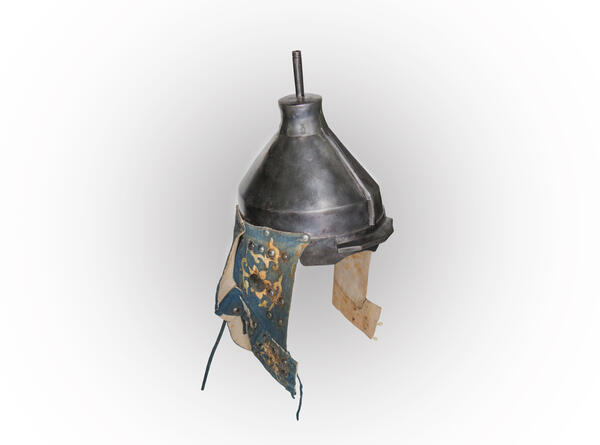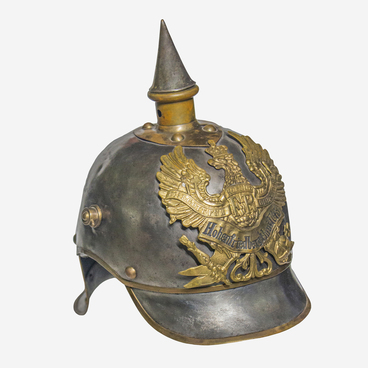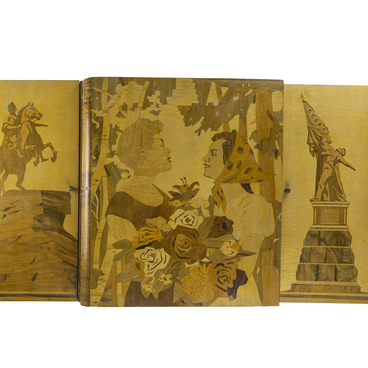The displayed helmet belongs to a Dzungar soldier. The Dzungar Khanate existed in the 17th一18th centuries on the territory, which is now divided between Kazakhstan, Kyrgyzstan, China, Russia, and Mongolia.
Oirat princes from the Choros clan created the unitary state in Western Mongolia. In the middle of the 1630s, one of them — Erdeni Batur — managed to unite the feuding tribes.
During the next 120 years, the Dzungar Khanate became one of the key political actors in Central Asia. The Dzungars ceased Russian expansion to Southern Siberia, defeated the northern Mongolian state of the Altan Khans. At the end of the 17th century, they brought Eastern Turkestan populated by the Muslims under control, devastated the nomad camps of Eastern and Southern Kazakhstan, and beat the Western Mongolian khans.
The most difficult wars for the Dzungar Khanate were three clashes with the most powerful state of the region at that time, the Great Qing. However, it did not seize the young Western Mongolian state.
Unlike their eastern tribesmen, the Western Mongols lived in a unitary state headed by Khong Tayiji rulers who had almost unlimited power. The Dzungar rulers encouraged farming and building of defensible cities, resettled the sedentary peoples' representatives to Dzungaria to develop arable farming.
The Khanate began to develop metallurgy and cloth production with the help of foreign masters. Modernization also began in the military sphere.
The main force of the army was the armored pikemen who could have long-range combat with bows, and later with matchlock guns. The main close combat weapons were long spears and pikes, as well as bladed weapons — backswords and sabers.
To protect themselves, the rich nomads used metal armor and soldiers — quilted armor, which repeated the cut of the traditional outer garment. Pauldrons protected the warrior’s arms and metal, leather, and fabric aventails 一 his neck and throat. The head was covered with a riveted helmet with crests, to which a hackle was fixed. A hackle was usually a brush of narrow cloth ribbons.
Oirat princes from the Choros clan created the unitary state in Western Mongolia. In the middle of the 1630s, one of them — Erdeni Batur — managed to unite the feuding tribes.
During the next 120 years, the Dzungar Khanate became one of the key political actors in Central Asia. The Dzungars ceased Russian expansion to Southern Siberia, defeated the northern Mongolian state of the Altan Khans. At the end of the 17th century, they brought Eastern Turkestan populated by the Muslims under control, devastated the nomad camps of Eastern and Southern Kazakhstan, and beat the Western Mongolian khans.
The most difficult wars for the Dzungar Khanate were three clashes with the most powerful state of the region at that time, the Great Qing. However, it did not seize the young Western Mongolian state.
Unlike their eastern tribesmen, the Western Mongols lived in a unitary state headed by Khong Tayiji rulers who had almost unlimited power. The Dzungar rulers encouraged farming and building of defensible cities, resettled the sedentary peoples' representatives to Dzungaria to develop arable farming.
The Khanate began to develop metallurgy and cloth production with the help of foreign masters. Modernization also began in the military sphere.
The main force of the army was the armored pikemen who could have long-range combat with bows, and later with matchlock guns. The main close combat weapons were long spears and pikes, as well as bladed weapons — backswords and sabers.
To protect themselves, the rich nomads used metal armor and soldiers — quilted armor, which repeated the cut of the traditional outer garment. Pauldrons protected the warrior’s arms and metal, leather, and fabric aventails 一 his neck and throat. The head was covered with a riveted helmet with crests, to which a hackle was fixed. A hackle was usually a brush of narrow cloth ribbons.



